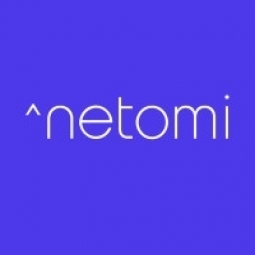下载PDF
WestJet Enhances Customer Experience with Netomi’s AI Solution
用例
- 现场人员安全管理
服务
- 培训
挑战
领先的航空公司西捷航空面临的挑战是满足客户日益增长的期望,即立即、准确、有效地解决他们的疑问。该公司正在扩大业务,开辟新的目的地,扩充机队,并建立全球合作伙伴关系。随着业务的扩张,客户群也在增长,导致客户支持工单增加。该公司发现很难管理激增的客户查询并提供优质支持。在 Covid-19 疫情期间,情况进一步恶化,航空公司收到了大量重新预订或取消航班的请求,以及包括飞行限制和取消在内的大量问题。
关于客户
西捷航空是一家优先考虑客户体验的领先航空公司。该公司不断通过新的目的地、令人印象深刻的机队新增和全球合作伙伴关系来扩大其业务。西捷航空以拥抱创新而闻名,通过卓越的支持来满足不断扩大的客户群。该公司拥有庞大的客户群,他们对立即、准确和有效地解决他们的疑问抱有很高的期望。西捷航空的客户使用 Facebook Messenger、WhatsApp 和 Google Assistant 等各种平台来提供预订、旅行当天和旅行后的支持。
解决方案
为了应对这一挑战,西捷航空在其员工队伍中引入了名为“朱丽叶”的人工智能解决方案。 Juliet 在 Facebook Messenger、WhatsApp 和 Google Assistant 上推出,以协助提前预订、预订、旅行当天和旅行后的支持。 Juliet 旨在立即解决近 700 个高度可重复的查询,同时将更复杂的问题无缝升级给人工代理。人工智能解决方案能够在危机时刻立即扩展,为客户服务团队提供即时缓解。在 Covid-19 大流行期间,Juliet 能够无缝扩展运营并解决激增的问题量,一度达到每秒 200 个问题。
运营影响
数量效益
相关案例.

Case Study
Wearables for Connected Workers
Together, Honeywell and Intel have developed a IoT proof of concept (PoC) for the Connected Worker. The Connected Worker can take many forms - factory laborer, mine worker, first responder, firefighters and more. For each environment and worker role, a different selection of sensors may be appropriate to provide the most meaningful IoT-fueled dataset to represent that individual worker asset. As with most IoT solutions, it is critical to avoid being overwhelmed by a steady stream of meaningless data. Rather, it is essential to send select actionable intelligence to the cloud for visualization and customized alert notifications. The downside is that data from individual wearable devices - if viewed independently - can potentially cause false alarms and contribute to inefficiencies in a manpower as a result. Fusing sensor technology with big data processing (hub/gateway), analytics - all in the cloud - is the key to improving local intelligence as well as remote visualization of actionable intelligence.

Case Study
Underground Mining Safety
The goal was to produce a safety system to monitor and support underground mining operations; existing systems were either too simple (i.e. phone line) or overly complex and expensive, inhibiting deployment, and providing little-to-no support in event of an accident. Given the dangerous nature of the mining work environment and the strict regulations placed on the industry, the solution would have to comply with Mine Safety and Health Administration (MSHA) regulations. Yet the product needed to allow for simple deployment to truly be a groundbreaking solution - increasing miner safety and changing daily operations for the better.

Case Study
Facility Management Solution in Construction Industry
In the construction of Crown Towers in Perth, hundreds of workers enter and exit the construction site each day, totalling into thousands by the completion of the project. All of these workers perform different tasks and come from different agencies, making it difficult for supervisors to track who does what, when, and where on such a large-scale site. An easy-to-use access, security and facility management solution was required.

Case Study
Industrial Workforce Mobility for Improved Safety & Operations
Huntsman Corporation, a global manufacturer and marketer of differentiated chemicals, undertook an aggressive program to eliminate injuries, product defects, and environmental releases at their Port Neches facility. Termed “Project Zero”, this program required a completely mobile solution to empower operations and maintenance personnel to capture defects, track work progress and make process and safety related decisions in real-time.

Case Study
Improving Factory Worker Posture
A 49 year old factory worker with long-standing low back pain was referred to a ViMove clinic for assessment and treatment. The worker’s low back pain had been managed and resolved with acupuncture in the past. The patient reported severe low back pain worse in the morning after prolonged rest. He also had trouble straightening up and experienced constant stiffness and pain.

Case Study
WEST TEXAS GAS TRUSTS WIN-911 ALARM NOTIFICATION SOFTWARE
It became clear that the SCADA system was not an infallible means ofmonitoring field stations; the systems would sometimes lose connection with the host computer. This caused delays in personnel response to alarms and increased the risk of severe warnings not being received before corrective actions could be implemented. As a precaution, the alarm points had to be visually monitored and staff would be required to call the appropriate personnel if an alarm came through. Regulations wereestablished for timely reporting. The management at West Texas Gas quickly determined that a secondary alarm support system needed to be installed. They were seeking something that would be able to monitor variable tags from the OPC server as well as monitor custom tags that were built into the existing SV32 SCADA system to observe and report flare volumes.





